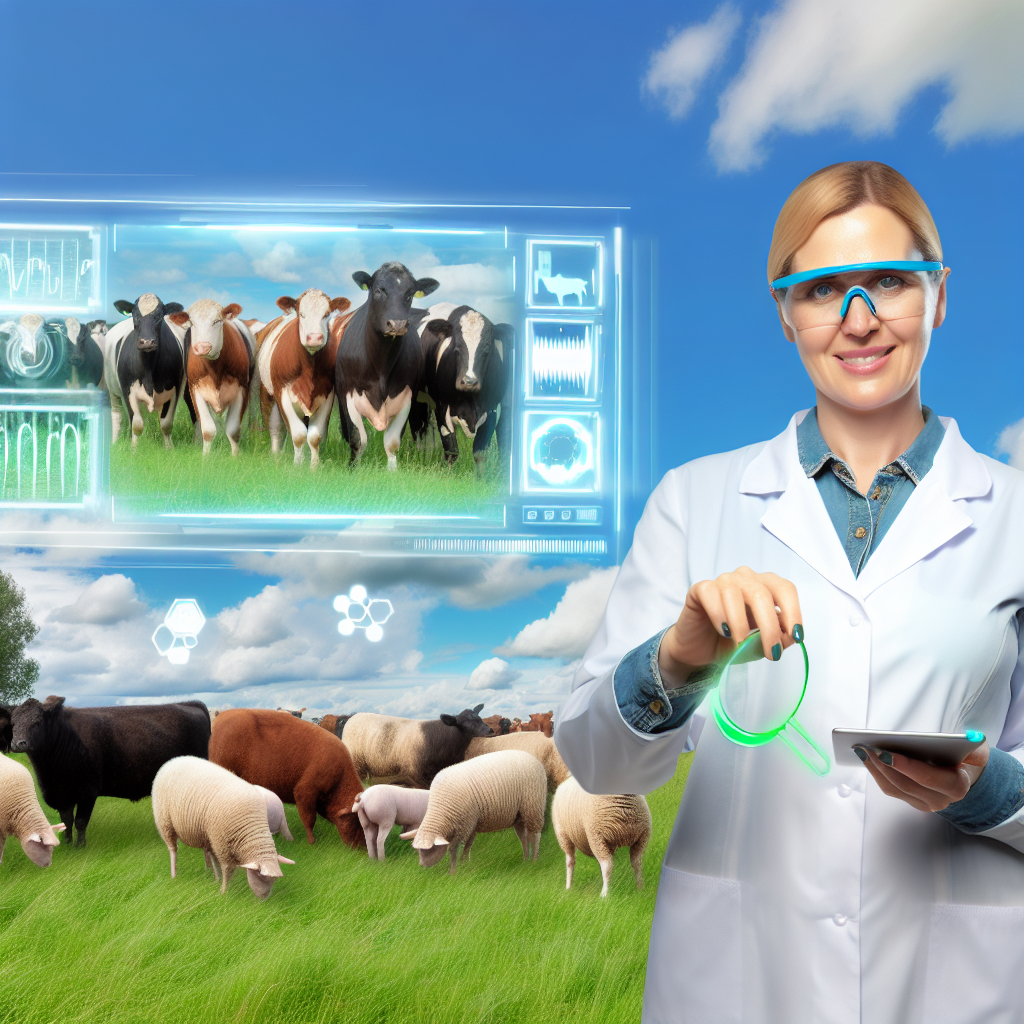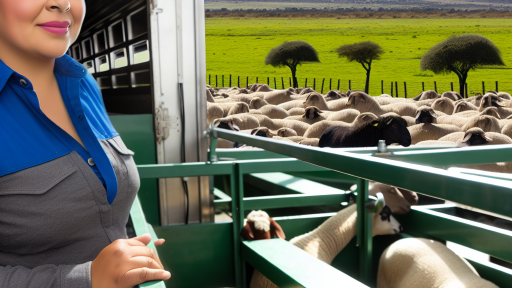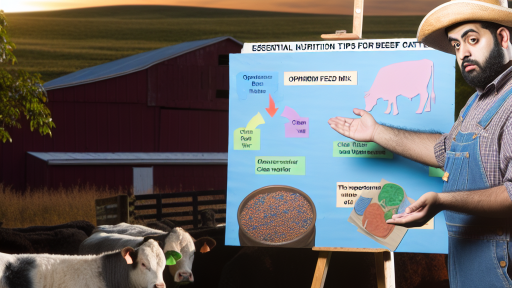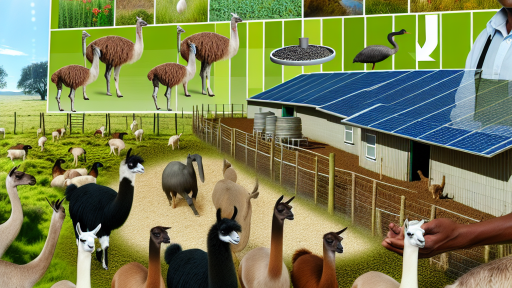Introduction to Genetic Tools in Herd Management
Genetic tools revolutionize how farmers manage their herds.
These technologies enhance breeding precision and animal health.
Moreover, they drive efficiency in livestock production.
The Role of Genetic Technologies
Genetic technologies simplify the selection of desirable traits.
Farmers can now analyze genetic markers with ease.
This analysis leads to informed breeding decisions.
Consequently, herds exhibit better growth rates and disease resistance.
Types of Genetic Tools
Several genetic tools are widely available today.
- Genomic selection helps predict the performance of animals.
- DNA sequencing allows for detailed genetic analysis.
- Marker-assisted selection accelerates the breeding process.
Each of these tools contributes to improving herd quality.
Benefits of Using Genetic Tools
Utilizing genetic tools enhances herd quality in multiple ways.
First, they reduce the time needed for traditional breeding cycles.
Second, these tools increase the likelihood of producing superior livestock.
Additionally, they can decrease the overall cost of herd management.
Implementation Strategies
Farmers must develop effective strategies for utilizing genetic tools.
Education on the use of these technologies is crucial.
Transform Your Agribusiness
Unlock your farm's potential with expert advice tailored to your needs. Get actionable steps that drive real results.
Get StartedCollaboration with geneticists can also assist in optimizing outcomes.
Lastly, investing in training and resources increases the likelihood of success.
Understanding Herd Quality
Key Metrics and Indicators
Herd quality is essential for successful livestock management.
It reflects multiple factors that contribute to overall herd health and productivity.
First, reproductive performance serves as a crucial indicator of herd quality.
This includes metrics such as conception rates and calving intervals.
Next, growth rates also signify the efficiency of the herd’s genetics and nutrition.
Healthy animals grow faster and reach their market weight sooner.
Furthermore, disease resistance plays a significant role in maintenance costs.
A herd that easily resists diseases incurs lower veterinary expenses.
Additionally, milk production per cow is vital for dairy herds.
This metric directly influences profitability and sustainability in dairy farming.
Herd longevity should not be overlooked in evaluating quality.
Animals that live longer contribute more over their lifetimes.
Moreover, genetic diversity within the herd enhances resilience.
It ensures better adaptation to environmental changes and disease pressures.
Assessing herd quality involves multiple interconnected factors.
Each metric provides insights into potential improvements through genetic tools.
The Role of Selective Breeding in Enhancing Genetic Traits
Understanding Selective Breeding
Selective breeding improves genetic traits within livestock populations.
Farmers choose specific animals based on desired characteristics.
This process enhances desirable traits, such as growth rate and disease resistance.
Moreover, selective breeding helps maintain genetic diversity.
It allows for the adaptation of livestock to various environments.
Methods of Selective Breeding
There are several methods farmers use for selective breeding.
Showcase Your Farming Business
Publish your professional farming services profile on our blog for a one-time fee of $200 and reach a dedicated audience of farmers and agribusiness owners.
Publish Your ProfileFirst, they apply controlled mating techniques.
This ensures that only the best-performing animals breed.
Second, artificial insemination has become a common practice.
This method allows for a wider genetic pool.
Embryo transfer is another advanced technique gaining popularity.
It maximizes genetic potential by transferring embryos from superior females.
Benefits of Selective Breeding
Selective breeding offers numerous advantages to producers.
One benefit is improved productivity and efficiency.
Farmers experience higher yields of milk, meat, or wool.
Additionally, this approach reduces the prevalence of genetic diseases.
Consequently, livestock health and welfare improve significantly.
Ultimately, selective breeding leads to better economic outcomes.
Challenges in Selective Breeding
Despite the benefits, selective breeding faces challenges.
One major concern is the risk of inbreeding.
Inbreeding can lead to a decrease in genetic diversity.
This situation may trigger genetic disorders in offspring.
Furthermore, the long-term focus on specific traits can neglect others.
A holistic approach is essential to ensure all traits are enhanced.
Future Directions in Selective Breeding
Technology continually transforms the field of selective breeding.
Genomic selection is emerging as a powerful tool.
This technique utilizes DNA analysis to identify superior genes.
Precision breeding will soon complement traditional methods.
Farmers will make informed decisions based on genetic data.
As a result, continued improvements in herd quality are expected.
Learn More: Health and Safety Guidelines for Livestock Handling
Utilizing Genetic Testing for Informed Decision-Making
Overview of Genetic Testing
Genetic testing offers valuable insights into livestock traits.
This process helps producers make data-driven breeding decisions.
It assesses traits like disease resistance and growth rates.
Moreover, understanding genetic makeup aids in enhancing herd quality.
Benefits of Genetic Testing
Genetic testing provides numerous advantages for farmers.
- It identifies superior genetic lines for breeding.
- Farmers can reduce the risk of inherited diseases.
- It optimizes resource allocation and management practices.
- Testing supports informed decisions around reproductive strategies.
Implementing Genetic Testing
To begin using genetic testing, start with a reputable lab.
Choose a lab that specializes in livestock genetic analysis.
Collect and submit samples following their guidelines.
Finally, analyze results to inform your breeding program.
Case Studies
Many farms have successfully implemented genetic testing.
For instance, Green Valley Farms significantly improved their herd.
They focused on breeding bulls with strong genetic traits.
As a result, they noticed enhanced calving rates and reduced vet costs.
Future Trends in Genetic Testing
The field of genetic testing is rapidly evolving.
Advancements in technology continually enhance accuracy.
Showcase Your Farming Business
Publish your professional farming services profile on our blog for a one-time fee of $200 and reach a dedicated audience of farmers and agribusiness owners.
Publish Your ProfileAdditionally, new traits are being identified for testing.
Farmers can expect even more tailored solutions in the future.
Explore Further: Genetic Factors Influencing Livestock Fertility
Implementing Genomic Selection for Optimal Genetic Improvement
Understanding Genomic Selection
Genomic selection utilizes DNA information to enhance breeding programs.
This method increases the accuracy of selecting desirable traits.
Moreover, it accelerates the breeding process, resulting in faster improvements.
Benefits of Genomic Selection
Genomic selection allows for better prediction of genetic potential.
It provides clear data on how traits are inherited.
This leads to more informed breeding decisions.
Additionally, it reduces the costs associated with traditional breeding methods.
Steps to Implement Genomic Selection
First, collect high-quality genetic data from the herd.
Next, analyze the data to identify key traits for improvement.
Then, create a selection index that prioritizes these traits.
Subsequently, choose breeding candidates based on the index.
Finally, monitor the progress and adjust the program as needed.
Challenges in Genomic Selection
Data management can be complex and resource-intensive.
Additionally, understanding the vast amount of genetic information can be daunting.
Furthermore, initial investment costs may be high for some farms.
Case Studies of Success
Many farms have successfully implemented genomic selection.
The Johnson Family Dairy in Wisconsin saw improved milk yield.
Similarly, Green Pastures Cattle Ranch enhanced meat quality significantly.
These examples demonstrate the practical benefits of genomic tools.
Delve into the Subject: Crossbreeding vs. Purebreeding: Pros and Cons

Combining Traditional Breeding Techniques with Genetic Tools
Understanding Traditional Breeding
Traditional breeding relies on selecting the best animals for reproduction.
This process takes place over multiple generations.
Farmers look for traits like size, health, and reproductive efficiency.
Successful outcomes often yield stronger and healthier offspring.
The Role of Genetic Tools
Genetic tools provide advanced methods for enhancing breeding programs.
They allow for the identification of desirable traits more accurately.
This technology reduces the time needed to achieve specific breeding goals.
Genetic markers can pinpoint animals with superior genetics.
Integrating Approaches for Optimal Results
The combination of traditional and genetic approaches maximizes herd quality.
Farmers can improve the genetic diversity of their herds effectively.
Simultaneously, they maintain the proven and reliable aspects of traditional breeding.
This integration leads to healthier animals with better production traits.
Case Studies and Success Stories
Many farms have successfully combined these methods.
For example, Smith Farms in Iowa utilized genetic markers alongside their breeding strategy.
As a result, they increased milk production in their dairy cattle significantly.
Additionally, Green Pastures Ranch optimized beef production with genetic advancements.
Future Trends in Herd Improvement
Looking ahead, the integration of technologies will only deepen.
Showcase Your Farming Business
Publish your professional farming services profile on our blog for a one-time fee of $200 and reach a dedicated audience of farmers and agribusiness owners.
Publish Your ProfileNew genetic editing tools, like CRISPR, are emerging in the agriculture sector.
These innovations promise even greater efficiency and precision in breeding.
Farmers must adapt and learn how to utilize these tools effectively.
Delve into the Subject: Cost-Effective Beef Cattle Feeding Strategies
Case Studies: Successful Applications of Genetic Tools in Herd Management
Case Study 1: Dairy Cattle Improvement
A large dairy farm in Wisconsin implemented genomic selection.
This approach enabled the farm to enhance milk production in their herd.
The results were evident within the first year of integration.
Higher yielding cows produced an additional 500 gallons yearly.
Farmers used data-driven methods to identify superior genetic traits.
Consequently, they effectively reduced the generational gap for desired traits.
Case Study 2: Beef Cattle Genetic Management
A Texas ranch utilized traditional breeding combined with DNA analysis.
This integration improved the quality of their beef cattle significantly.
They focused on traits such as marbling and growth rate.
As a result, their beef quality grade increased by one category.
This shift allowed them to access premium markets.
Additionally, it increased their overall profitability.
Case Study 3: Sheep Breeding Innovations
A shepherding family in Colorado adopted advanced genetic testing.
This change allowed them to track the lineage of their sheep.
They successfully bred for increased wool quality and disease resistance.
This selection process improved herd health and productivity.
Furthermore, their wool received higher prices at market.
This success strengthened their family business and legacy.
Case Study 4: Goat Dairy Operations
A goat farm in Vermont implemented DNA markers for breeding decisions.
This strategy targeted disease resilience and milk production traits.
They achieved a steady increase in milk yield per goat.
Consequently, herd health improved significantly over three years.
The farm noted lower veterinary costs as a result.
This success reinforced the benefits of genetic tools in dairy management.
Future Trends in Genetic Technologies and Herd Improvement Strategies
Advancements in Genetic Testing
Genetic testing technology continues to evolve rapidly.
Today’s tools provide accurate data about animal genetics.
Moreover, gene editing techniques are becoming more accessible.
Through these advancements, herders enhance herd quality more effectively.
Precision Breeding Techniques
Precision breeding is transforming livestock management.
This method focuses on selective breeding based on genetic traits.
As a result, breeders can achieve specific goals faster.
Consequently, this strategy improves traits like disease resistance and growth rates.
Integration of Genomics in Herd Management
Genomic data integration is essential for modern herd management.
This data allows farmers to make informed decisions.
For instance, it helps in identifying superior breeding candidates.
Additionally, it enhances the management of herd health and productivity.
Showcase Your Farming Business
Publish your professional farming services profile on our blog for a one-time fee of $200 and reach a dedicated audience of farmers and agribusiness owners.
Publish Your ProfileUse of Artificial Intelligence
Artificial intelligence increasingly plays a role in animal husbandry.
AI algorithms analyze vast datasets to find patterns.
This analysis helps predict performance and health issues.
Furthermore, it provides insights that improve breeding strategies.
Trends in Sustainable Livestock Production
Sustainability remains a critical focus for animal genetics.
Farmers aim to reduce environmental impacts through improved genetic practices.
For example, breeding for feed efficiency lowers resource usage.
In addition, this approach supports climate resilience.
Future Research Directions
Emerging research focuses on enhancing genetic diversity within herds.
Diverse genetics improve resilience to diseases and environmental changes.
Moreover, ongoing studies explore the implications of gene editing.
These research efforts can lead to breakthroughs in livestock improvement.
Additional Resources
Herd turnover rate reexamined: a tool for improving profitability …
Invited Review: Genetic decision tools for increasing cow efficiency …




